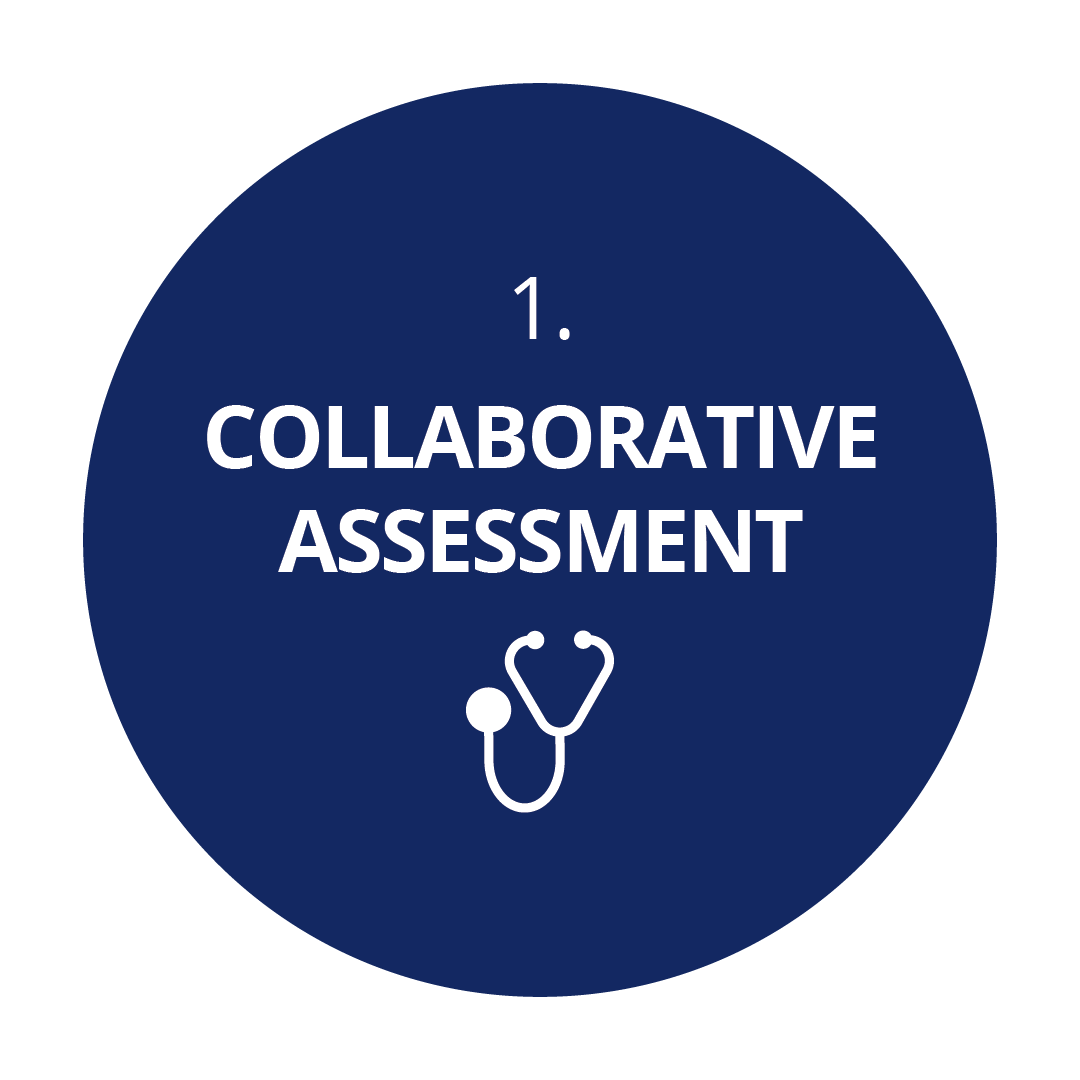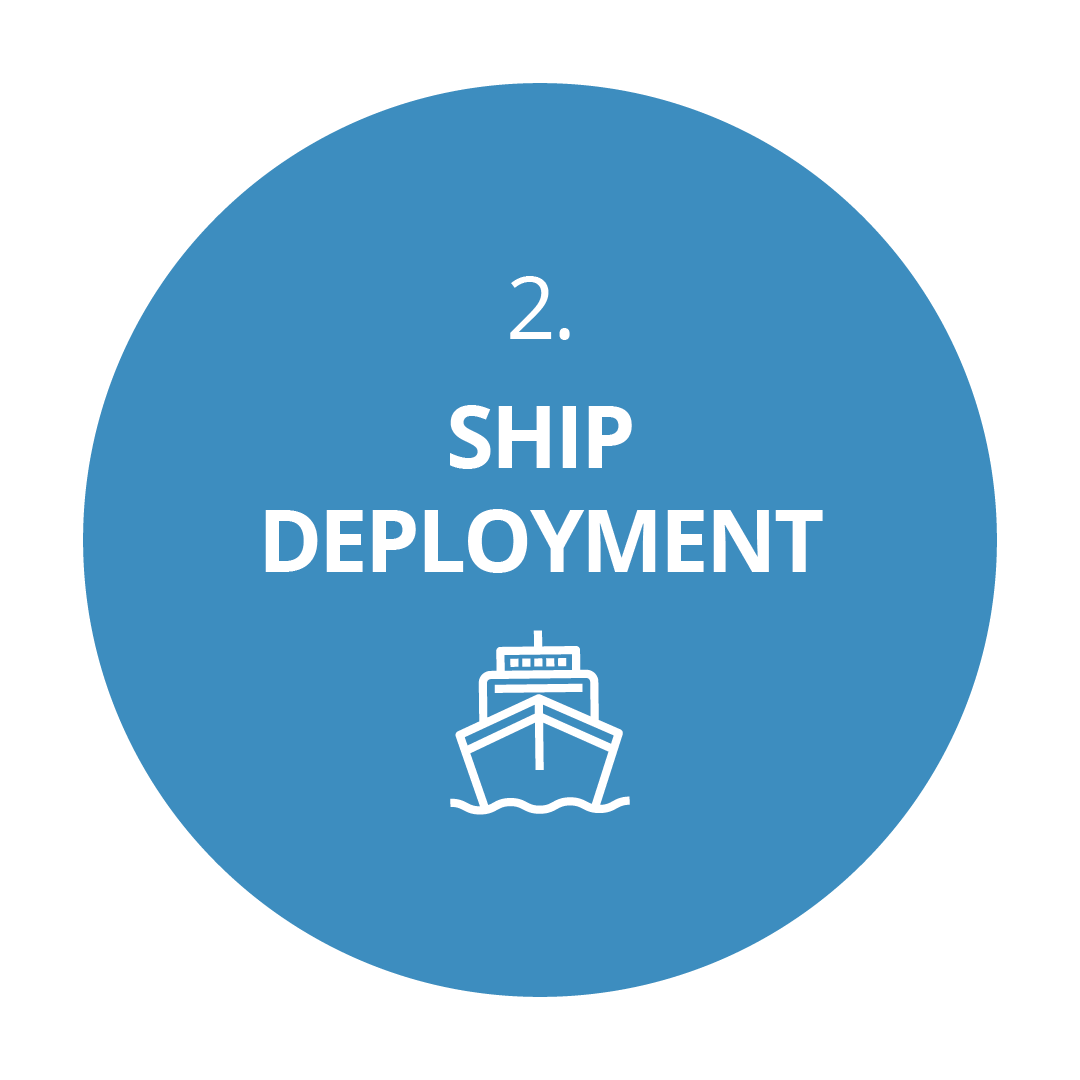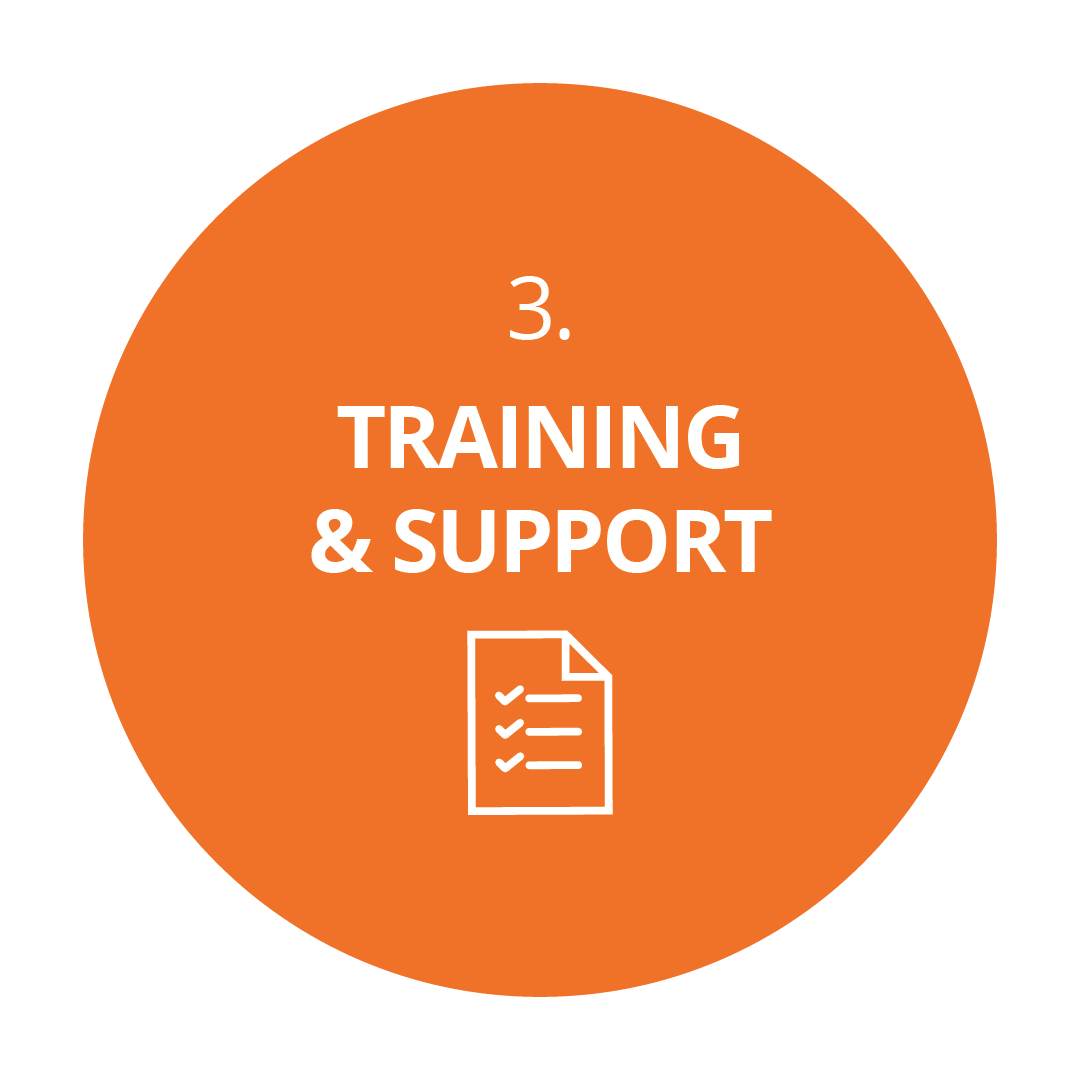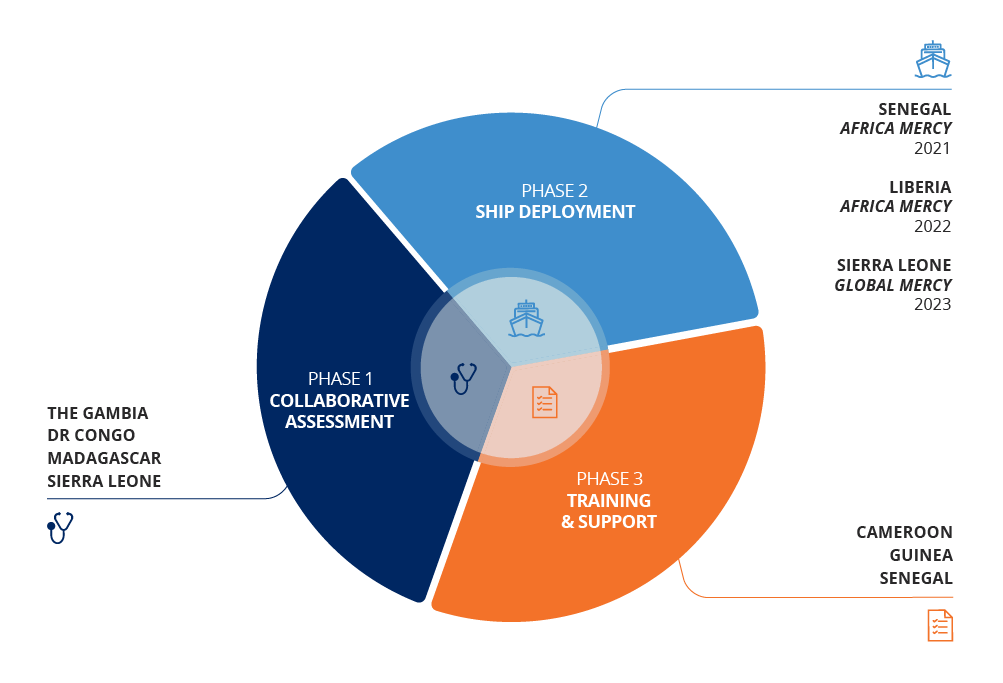OUR IMPACT
The Delivery
According to the Lancet Commission on Global Surgery, more than 18 million people die each year from conditions requiring surgical care. As a result, people suffer and die from “diseases of poverty” that can easily be cured through surgical intervention.
Mercy Ships tackles these diseases of poverty through three steps:



To achieve this, Mercy Ships delivers a customised three-year partnership model with every country it is invited to support.

Phase 1. Collaborative Assessment
Presidential Office, Ministry of Health, other departments of the government, and non-governmental organisations. A collaborative effort has an increased impact. A protocol of commitment is signed,
taking into account World Health Organisation targets. An analysis of capacity needs within the local health care system is undertaken, establishing where assistance will be most effective. The Assessment Team will examine surgical and ancillary service capacity, the port, security, and build rapport with key stakeholders. An Advance Team will enhance the effectiveness of the ship deployment by preparing for the ship’s arrival.
Phase 2. Ship Deployment
For ten months, a Mercy Ship is docked in the host nation’s port, providing free surgical and dental care for thousands of people, training and mentoring for local health care workers, renovations for local facilities, and more.
Phase 3. Training & Support
Project implementers return to understand any challenges faced by local health care professionals in implementing learned materials and skills, provide further instruction, as well as offer encouragement and additional input. On subsequent visits, teams ascertain how the work of Mercy Ships changed the lives of patients and trained health care professionals and evaluate the sustained hospital and clinic improvement.